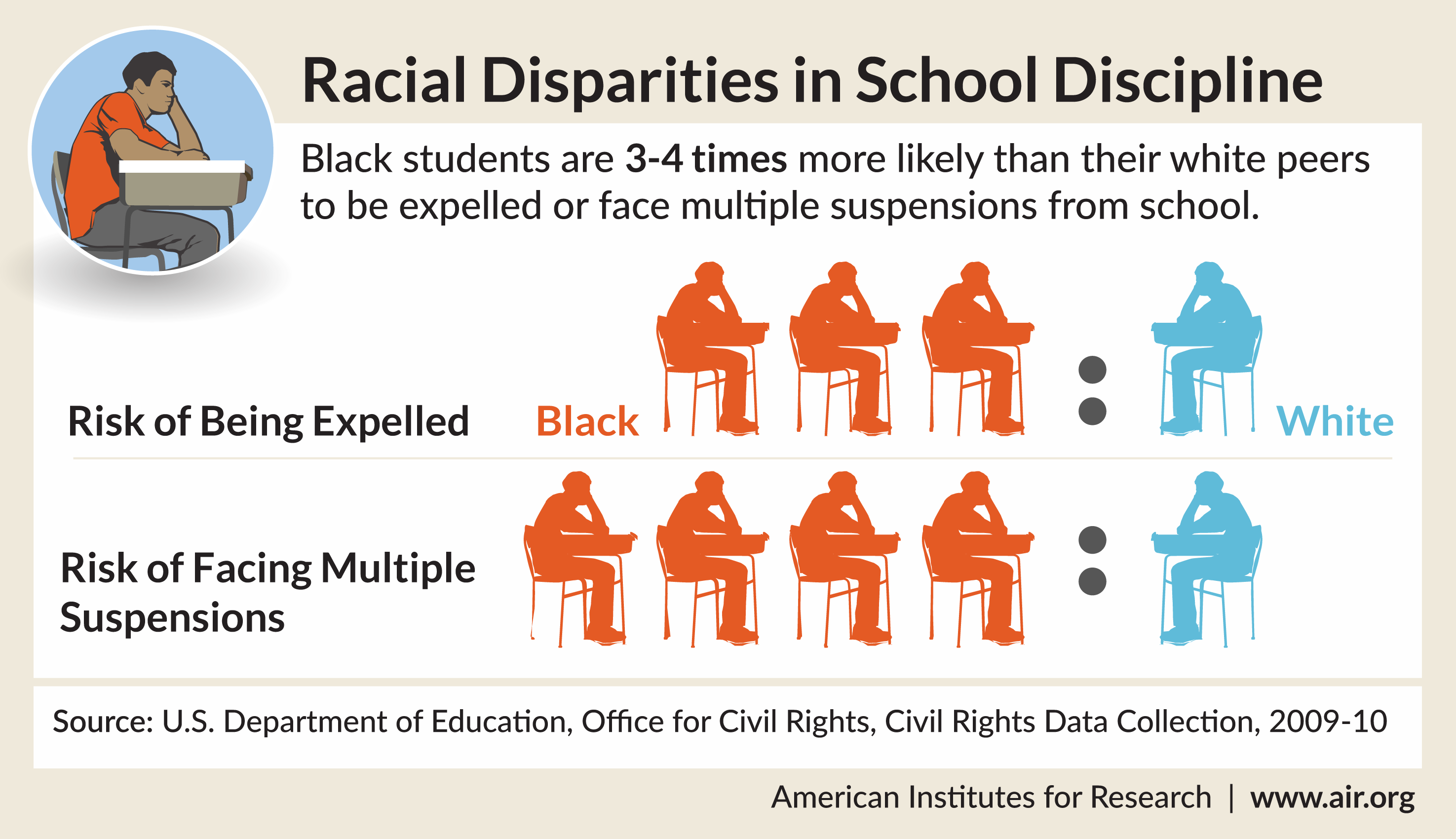Zero Tolerance and Bias Reinforce the School-to-Prison Pipeline
In the name of making our schools safe havens, districts have adopted zero-tolerance policies, increased school policing, and driven some of our most vulnerable students out of school and into a judicial system often built for punishment rather than support: the school-to-prison pipeline.
Zero-tolerance policies make it more likely that students will be arrested, suspended, or expelled for behavior that does not threaten school safety. Add to that biases and discrimination based on race, ethnicity, or perceived or actual sexual orientation or gender identity, and at-risk young people can end up alienated from their schools, in trouble with the police and juvenile courts, and in danger of long-term economic and social dysfunction.
Consider three recent cases:
- In a highly publicized case, Ahmed Mohamed, 14, was arrested at his Texas school when security staff mistook his homemade clock for a bomb. His parents pulled him out of the school and moved to Qatar.
- Jewlyes Gutierrez, a transgender California student, experienced years of bullying because of her gender identity. After fighting back with four students in her school, Jewlyes was charged with battery while the students who bullied her received school suspensions.
- A Black high school student in South Carolina who refused to leave her classroom was violently thrown from her seat and restrained by a school police officer who has since been suspended.
The disproportionate impact of this school-to-prison pipeline on youth of color is well-documented. Data show that Black students are suspended from school at a rate three times that of White students. While Black students represent about 16 percent of student enrollment, they account for 27 percent of students referred to law enforcement and 31 percent of students who experience a school-related arrest.

As a recent GSA Network report notes, researchers have also found that youth of color who are also lesbian, gay, bisexual, transgender, or questioning their sexual orientation or gender identity (LGBTQ) report experiencing harsh school discipline, biased application of school policy, and increased targeting for surveillance and policing by school staff. Many also report being blamed for their own victimization.
Schools bring in law enforcement to keep students safe and improve the school environment, but a 2013 report written by AIR explores how this response is ineffective and how it can worsen disciplinary and school safety issues. Other research from the Annie E. Casey Foundation shows that incarcerating juveniles does not make communities safer.
Students who are arrested and expelled or suspended from school are often left unsupervised and engage in negative behaviors. Juvenile detention involvement can lead to decreased odds of graduating from high school and to increased odds of suffering abuse and additional trauma, reoffending as adults, and being sexually exploited.
How do we eliminate the school-to-prison pipeline? The Supportive School Discipline Initiative, launched in 2011 by the Department of Education and the Justice Department, is a start. It aims to make school discipline more equitable in three ways, by:
- Fostering school climates that engage all students in learning by preventing problem behaviors.
- Keeping expectations and consequences clear and appropriate.
- Ensuring equity and continuous improvement in disciplinary policies and practices.
The initiative’s school discipline guidance package, released in 2014, recommends that states, districts, and schools coordinate their efforts to address the school-to-prison pipeline for LGBTQ youth and youth of color. Recommended practices include:
- Training staff, engaging families and community partners, and deploying resources to help students develop the social, emotional, and conflict-resolution skills needed to avoid and de-escalate problems.
- Holding students accountable for their actions in developmentally appropriate ways to teach them responsibility, respect, and acceptable behavior in and out of school.
- Using suspension and expulsion only as a last resort and for serious infractions, and equipping staff with alternative strategies to address problem behaviors while engaging all students in instruction to the greatest extent possible.
- Ensuring fairness and equity for all students through continuous data-driven evaluation of the impact of discipline policies and practices on students.
Another more recent complementary Department of Education publication, Addressing the Root Causes of Disparities in School Discipline an Educator’s Action Planning Guide, provides tools to help schools and districts identify the root causes of exclusionary discipline and discipline disparities.
Schools must be places of safety and support for all students. Re-evaluating zero-tolerance policies, training staff to deal with non-threatening but disruptive student behavior, and working to eliminate bias can go a long way to ending the school-to-prison pipeline.
David Osher is an AIR vice president and Institute Fellow. He is also principal investigator for The National Technical Assistance Center for the Education of Neglected and Delinquent Children and Youth.
